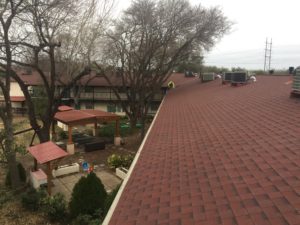 Regular roof inspections can help you prolong the life of your roof by catching potential problems before they have an opportunity to worsen and cause extensive damage. Ideally, you should have your roof professionally inspected every spring and every fall as well as after every hailstorm or significant wind event. However, if you only have an annual inspection, there are several good reasons to have a professional examine your roof in the spring.
Regular roof inspections can help you prolong the life of your roof by catching potential problems before they have an opportunity to worsen and cause extensive damage. Ideally, you should have your roof professionally inspected every spring and every fall as well as after every hailstorm or significant wind event. However, if you only have an annual inspection, there are several good reasons to have a professional examine your roof in the spring.
Spring Roof Inspections – Austin, TX |Why It’s Important
Cold weather can take a toll on your roof, but in Central Texas, most damage occurs during the spring and summer. Although hail can strike any time of the year, it is more common in the spring. In the summer, your roof could be subjected to torrential downpours and damaging winds. In addition, hot summer days and the area’s bountiful sunshine can exacerbate the deterioration of roofing materials and strip them of their ability to remain watertight. By having your roof inspected in the spring, you can make sure that any necessary repairs are handled before severe weather strikes.
What Should a Roof Inspection Include?
A professional roof inspection will cover a variety of conditions. The exact features that will be inspected will depend on your roofing material, your roof design and your roof accessories. Here are the elements that are commonly included in a roof inspection.
• Flashing: Damaged or missing flashing can allow leaks to form. Flashings around skylights, vents, chimneys and other roof penetrations should be inspected as well as the flashings where the roof and walls meet.
• Roof Covering: Depending on the type of roof covering involved, the inspector will look for mold or mildew, low spots that allow water to pool, damaged components and structural deformations. If you have asphalt shingles, the inspector will look for cracked, degranulated, loose, cupped or missing shingles. If you have a metal roofing system, the inspector will check for loose fasteners, panel corrosion, discoloration and deflected panels.
• Tree Limbs: The inspector will check for overhanging tree limbs that pose potential problems for your roof. For example, branches that scrape against your roof or dead limbs that could fall on a windy day may need to be removed to ensure the integrity and safety of your roof.
• Gutters: While inspecting the roof, your contractor will have an excellent view of your gutters. He can tell whether they are cracked, sagging, clogged or otherwise in need of attention.
• Attic: Your contractor will likely want to access your attic as part of his inspection. Once there, he will look for evidence that the rafters, trusses, roof deck and insulation have been subjected to water penetration or unusual amounts of moisture. He will look for any gaps that allow sunlight to enter through the roof or around the fascia boards.
• Miscellaneous: Other areas and elements may be included in a roof inspection. For example, the contractor may need to check your soffits and fascia boards, chimney cap, roof valleys or drip edge.
Alpha Roofing is a well-respected roofing contractor serving residential and commercial clients in Austin and throughout Central Texas. We offer an extensive range of roofing services, including roof inspections, maintenance plans, chimney and roof repairs, asphalt shingle installations, flashing repairs and installations, metal roofing systems, flat roof replacements, skylight installations, siding installations and moss removal. We are known for our dependability, honesty, superior workmanship and professionalism. If you would like to request a free quote, call (512) 777-1086 to speak with one of our knowledgeable staff members or use our online form to send us your information.
